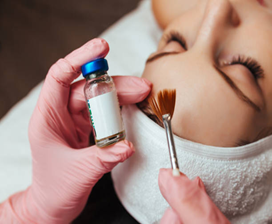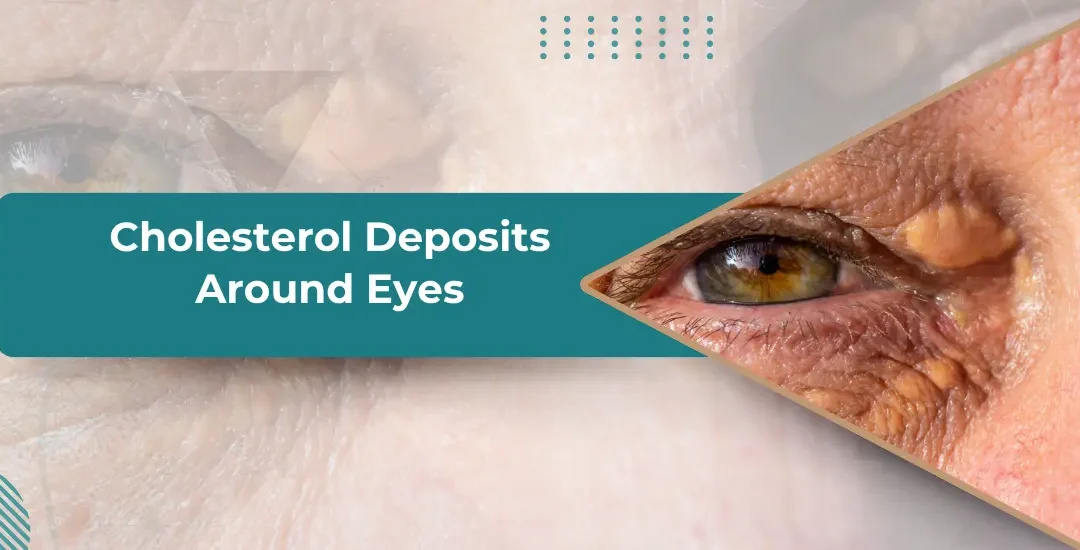Are you noticing little yellow spots or lumps close to your eyes and wondering what these might be? Xanthelasma is the medical name for these likely cholesterol deposits. Though not painful, they can affect your appearance and confidence. Often harmless, they may signal underlying health issues, like high cholesterol. You can manage or remove them effectively if a trusted skin specialist guides you with the right approach.

Dr. Swetha P., an acclaimed dermatologist in Indiranagar, Bangalore, shares “Xanthelasma is more than just a cosmetic concern”. “It often reflects lipid imbalances in the body. Fortunately, several treatment options are available to remove these deposits safely.”
Dr. Swetha P. is the founder of Dr. Swetha’s Cosmoderm Centre, a leading skin clinic in Indiranagar, Bangalore. With years of experience in dermatology and advanced aesthetic treatments, she has helped thousands of patients regain smooth, blemish-free skin. Her expertise in diagnosing and treating conditions like xanthelasmata makes her one of the most preferred specialists for cholesterol deposits on eyelids treatment.
What Causes Cholesterol Deposits Around Eyes?
- High Blood Cholesterol:
Elevated LDL (bad cholesterol) and triglyceride levels are often primary contributors.
- Genetic Disorders:
Conditions like familial hypercholesterolemia can cause early and persistent deposits.
- Liver Dysfunction:
Since the liver regulates cholesterol, any impairment may result in abnormal deposits.
- Poor Diet:
High intake of saturated fats and processed foods increases lipid levels.
- Obesity and Sedentary Lifestyle:
Lack of activity and weight gain often accompany lipid imbalance.
- Underlying Medical Conditions:
Diabetes, thyroid dysfunction, and metabolic syndrome are common culprits.
- Smoking and Alcohol Consumption:
Both habits can exacerbate cholesterol imbalance and worsen skin condition.
Pro Tip: Even individuals with normal cholesterol levels can develop xanthelasma. It’s crucial to get a complete lipid profile checked.
Common Symptoms and How to Recognize Xanthelasma?
Think it might be xanthelasma? Here’s how to identify it:
- Yellowish Bumps or Patches:
Typically appear on the inner corners of the upper eyelids.
- Symmetrical Appearance:
They often appear on both eyes, forming mirror-like patches.

- Soft and Flat Texture:
Unlike cysts or pimples, xanthelasmata are smooth and soft.
- Non-painful Growths:
These do not usually hurt, but can affect self-confidence.
- Gradual Increase in Size:
If left untreated, the patches can grow slowly.
- No Itching or Inflammation:
They usually don’t cause irritation or redness.
- Visible Through Skin:
Their yellow hue is often visible due to the superficial location.
Cholesterol Deposits in Eyes Treatment Options
Modern dermatology offers several effective treatments for xanthelasma removal tailored to your skin and health profile:
- Topical Treatments:
These include medicated creams with agents like trichloroacetic acid that gradually peel off lesions.

- Cryotherapy:
Liquid nitrogen is used to freeze and remove the deposit. Quick but may need multiple sessions.
- Electrodesiccation:
Uses electric current to remove lesions. Offers precision with minimal scarring.

- Surgical Excision:
Physically removes the cholesterol deposits under local anesthesia. Recommended for larger patches.

Mild acid solutions can help reduce superficial cholesterol patches gradually.
Xanthelasma laser treatment using CO2 or Erbium lasers for precise removal with minimal scarring.
Note: Laser treatment for xanthelasma side effects may include temporary redness, swelling, or discoloration.
Lifestyle Changes to Control Cholesterol Spots Around Eyes

- Follow a Heart-Healthy Diet: Focus on incorporating fruits, vegetables, whole grains, lean proteins, and healthy fats into your meals.
- Limit Saturated Fats & Sugars: Avoid processed and fried foods that elevate cholesterol.
- Exercise Regularly: Aim for at least 30 minutes of physical activity daily to improve lipid profile.
- Quit Smoking: Smoking accelerates lipid accumulation and skin aging.
- Limit Alcohol Intake: Alcohol can worsen liver function and cholesterol levels.
- Monitor Your Cholesterol Levels: Regular blood tests help catch lipid issues early.
- Manage Underlying Conditions: Proper diabetes or thyroid management can help.
When to See a Doctor

While xanthelasma is usually harmless, medical attention is recommended in the following cases:
- Rapid growth: If the patch is enlarging quickly.
- Cosmetic concern: If the deposits affect your confidence or appearance.
- Multiple or recurring lesions: Could indicate ongoing cholesterol imbalance.
- Family history of heart disease: Important to assess cardiovascular risk.
- No known health issues but spots appear: May reveal hidden conditions.
- Persistent patches post-treatment: May need additional intervention.
Early consultation can help avoid invasive treatments later.
Frequently asked question.
How to remove cholesterol deposits around eyes naturally?
Do cholesterol deposits in eyes go away?
Do cholesterol eye deposits indicate high cholesterol?
What to eat to get rid of xanthelasma?
Can xanthelasma be permanently removed?
Is xanthelasma dangerous?
How much does xanthelasma treatment cost?
Does laser treatment leave scars?
Can xanthelasma come back after removal?
Does cholesterol in eyelid mean heart disease?
Reference links:
https://my.clevelandclinic.org/health/diseases/23385-xanthelasma
https://www.medicalnewstoday.com/articles/321267
Disclaimer: The information shared in this content is for educational purposes and not for promotional use.


